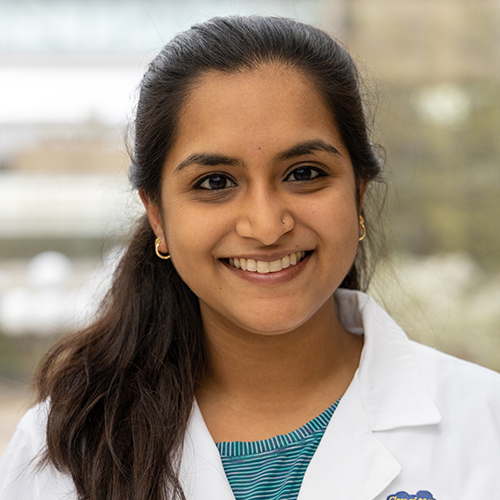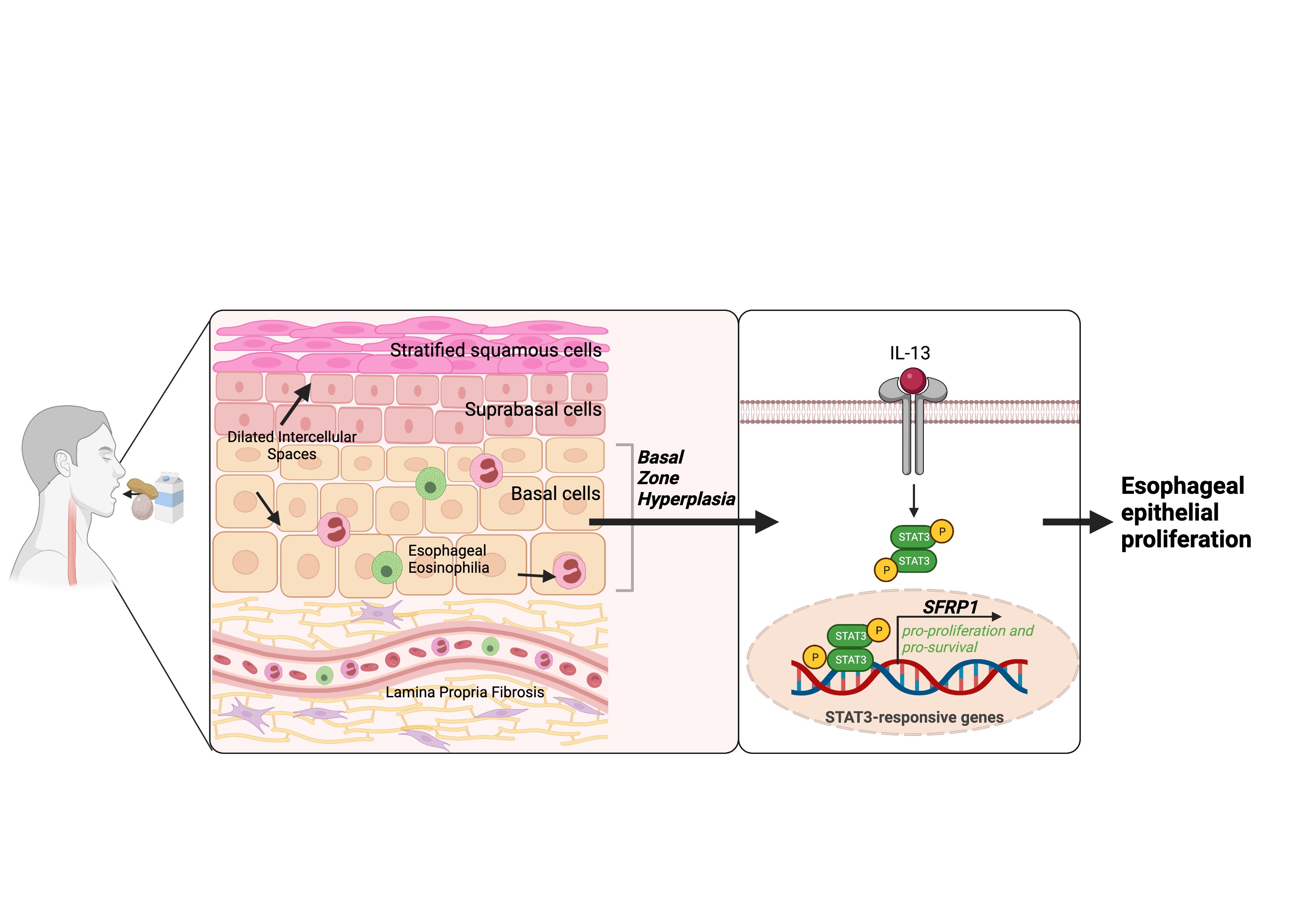MCP Student Sahiti Marella shares her journey to becoming grant funded
By Lynn McCain | March 8 2023Grant funding to support research endeavors is the heart of the research enterprise in the United States. It makes possible the scientific advances that lead to new treatments, better understanding of diseases and so much more. At Michigan Medicine, much of the grant funding comes through the National Institutes of Health, a federal grant program focused on health research. These are highly competitive grants and obtaining an award, especially for graduate students, is one of the first steps toward an academic research career.
 The Department of Pathology offers the Molecular and Cellular Pathology Graduate Program (MCP) for students who are interested in translational research – the step between basic science research and clinical care, the “bench-to-bedside” transition. Sahiti Marella is a graduate student in the MCP who was recently awarded her first F31 grant. This is an NIH-funded predoctoral grant that provides awardees with a monthly stipend to support tuition and fees, and funds for training-related costs while they conduct their PhD research project, for up to five-years of funding.
The Department of Pathology offers the Molecular and Cellular Pathology Graduate Program (MCP) for students who are interested in translational research – the step between basic science research and clinical care, the “bench-to-bedside” transition. Sahiti Marella is a graduate student in the MCP who was recently awarded her first F31 grant. This is an NIH-funded predoctoral grant that provides awardees with a monthly stipend to support tuition and fees, and funds for training-related costs while they conduct their PhD research project, for up to five-years of funding.
Marella grew up in a suburb of Raleigh, North Carolina and completed her undergraduate training in public health at East Carolina University. She was a pre-med student who was interested in pursuing a career as a NICU (Neonatal Intensive Care Unit) doctor. This interest led her to the laboratory of Dr. Krista McCoy, who conducted research on maternal exposure to environmental pollutants and the development of birth defects in infants. “Soon after I dipped my toes in the water of research, I fell in love with it in a way that I didn’t expect,” explained Marella. She was fascinated by the process of taking big biomedical goals, such as what happens when moms are exposed to pesticides, and boiling the question down to the molecular biology level – what happens to a specific signaling pathway?
At the same time, she worked closely with another mentor, Dr. Jason Higginson, who was the chief of neonatology at East Carolina University. “They co-mentored me through my undergraduate education, each one hoping I would pursue their career field. We joke that Dr. McCoy won!” laughed Marella.
As she was completing her undergraduate degree, Marella needed to find where she wanted to pursue her PhD. She applied to several programs, but when she came to visit Michigan, she loved the collegiate atmosphere she encountered in the Pathology Department. “The faculty collaboration is extraordinary and that really helps the students to partake in collaboration. The primary reason I chose the MCP, though, was because of the student cohort that I met when I was interviewing. They were a real community and they seemed happy in their work. They had a good work-life balance. It is important to like the students in your cohort because they are going to be there for you throughout your PhD program, and for the rest of your career,” she explained.
Marella chose to work in the laboratory of Dr. Simon Hogan, the Askwith Research Professor of Food Allergy, Professor of Pathology, and a member of the Mary H. Weiser Food Allergy Center. She started in 2018 and was able to complete her coursework and advance to candidacy status prior to the pandemic research lab shutdowns. “The timing was actually pretty good for me,” she reflected. “I had a couple months of uninterrupted time to comb through the literature and to prepare my research plan.” Her research project is looking at a disease called EoE, which is a food-induced chronic inflammatory disease of the esophagus that causes a thickening of the esophageal wall, narrowing the esophagus (luminal narrowing). This leads to food getting impacted in the esophagus, mostly in children, but also in adults. It was this plan that Marella used as the basis of her F31 grant application.
 “I was interested in looking into what drives basal zone hyperplasia and epithelial cell proliferation in EoE, as this is a driver of luminal narrowing of the esophagus. In the literature, the cytokine IL-13 has been shown to be one of the master regulators of EoE disease pathogenesis. I began to investigate how IL-13 drives basal zone hyperplasia using bioinformatics tools. That led me to a transcription factor, STAT3, which is known to have a significant role in cell proliferation in cancers.” Marella went on to use additional bioinformatics tools and laboratory research, discovering that IL-13 induced the expression of SFRP1, a putative STAT3 target and a critical protein involved in the WNT-signaling pathway. This discovery formed the foundation for her grant, titled “IL-13-induced SFRP1 requires STAT3 to regulate esophageal epithelial proliferation and Basal Zone Hyperplasia in EoE”.
“I was interested in looking into what drives basal zone hyperplasia and epithelial cell proliferation in EoE, as this is a driver of luminal narrowing of the esophagus. In the literature, the cytokine IL-13 has been shown to be one of the master regulators of EoE disease pathogenesis. I began to investigate how IL-13 drives basal zone hyperplasia using bioinformatics tools. That led me to a transcription factor, STAT3, which is known to have a significant role in cell proliferation in cancers.” Marella went on to use additional bioinformatics tools and laboratory research, discovering that IL-13 induced the expression of SFRP1, a putative STAT3 target and a critical protein involved in the WNT-signaling pathway. This discovery formed the foundation for her grant, titled “IL-13-induced SFRP1 requires STAT3 to regulate esophageal epithelial proliferation and Basal Zone Hyperplasia in EoE”.
This was Marella’s first grant application, and the process was daunting! “The first thing I did was look up the grant’s instructions and requirements. I read through that so I would know exactly what I needed to do, the page limits, formatting, content, everything.” She then read other students’ successful F31 grant applications to see what they did to craft a winning application. One of the key pieces of a grant application is the Specific Aims document, which gives a summary of the what, why and how of the grant project. “The entire grant is centered around a central hypothesis and then your two specific aims, which must be independent of each other, in case one fails.” From there she crafted the experiments she would complete to address each aim. “I had to constantly go back and ask myself if this experiment would answer the question in the specific aim or if I had gone off on a tangent.” One of her friends explained the process to her like this, “It is like finding loopholes in contracts. A well-written grant won’t have loopholes.”
Finally, the application was complete and Marella submitted it in December 2021. After anxiously awaiting news for several months, she received the disappointing notice – her grant was not going to be funded. She carefully studied the reviewers’ comments and began the process of addressing her grant’s weaknesses. In August 2022, she resubmitted her application and began waiting again. This time, the news was good! Her grant had been funded! She describes the process as “a marathon, not a sprint – patience and perseverance are a key ingredient in the grant-writing process.”
Marella anticipates it will take her 12-18 months to complete the research necessary for her to prepare her PhD thesis. She is aiming for a graduation date during the summer of 2024. After graduation? She hopes to be able to continue working in the Hogan lab as a postdoctoral fellow. “I have learned a lot during my time here. This lab is so multifaceted; we use patient samples, organoids, mouse models, bioinformatics. I’ve been able to drive my project independently. While I am considering all options, I wouldn’t be surprised if I am still here after graduation.”
 ON THE COVER
ON THE COVER
 ON THE COVER
ON THE COVER
 ON THE COVER
ON THE COVER
 ON THE COVER
ON THE COVER
 ON THE COVER
ON THE COVER
 ON THE COVER
ON THE COVER
 ON THE COVER
ON THE COVER
 ON THE COVER
ON THE COVER
 ON THE COVER
ON THE COVER
 ON THE COVER
ON THE COVER
 ON THE COVER
ON THE COVER
